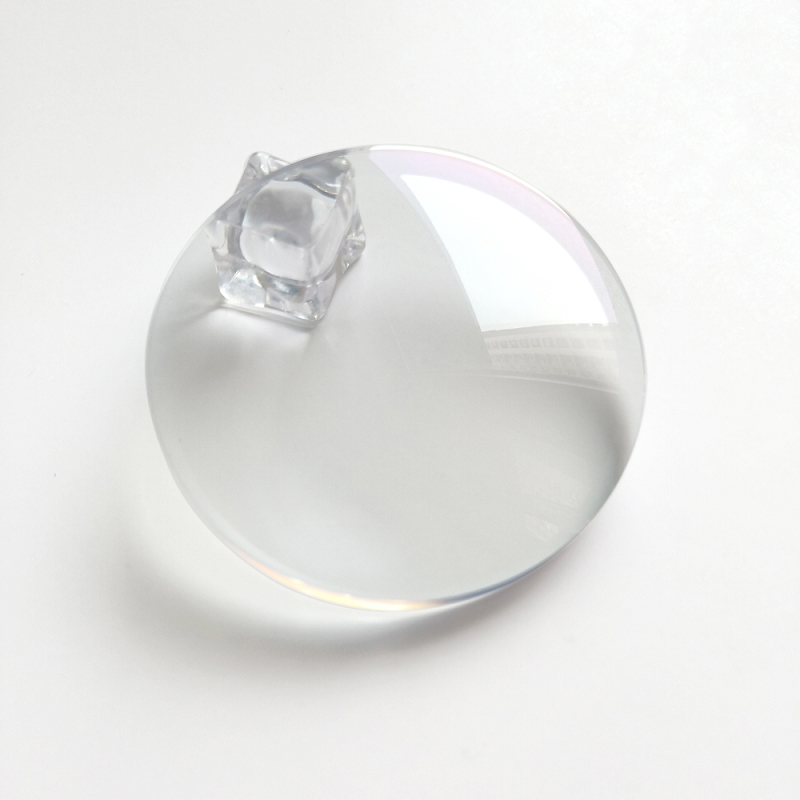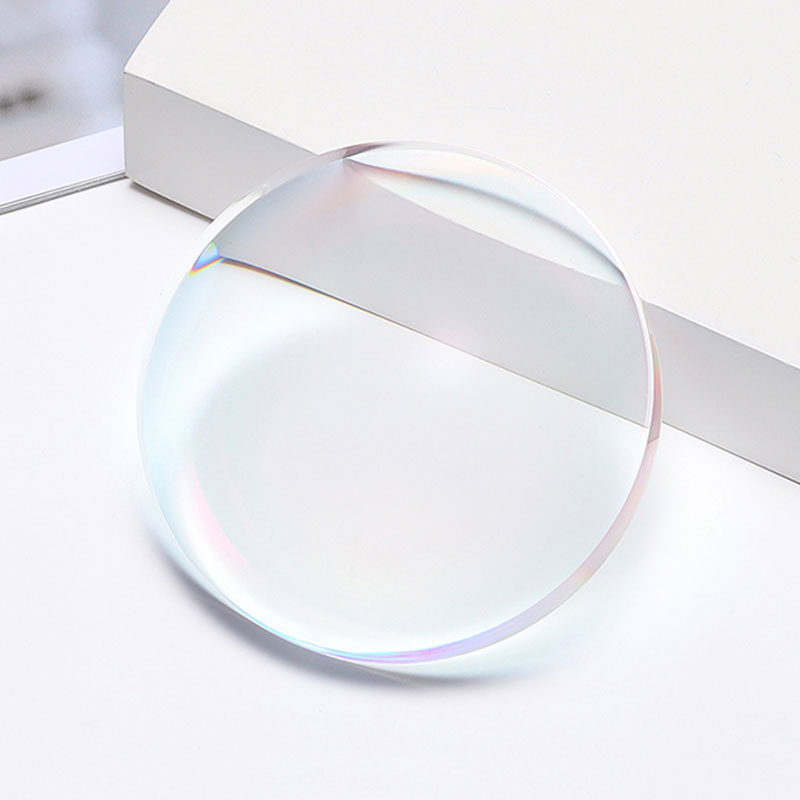Exploring the Secrets of Vision Correction: Understanding Your Lens Options
1.1. The Significance of Lenses for Visual Health
Human vision is the primary way we gather information and perceive the world. However, due to factors like aging, lifestyle habits, or congenital conditions, many people face various refractive errors. These issues include:
- Nearsightedness (Myopia): Distant objects are blurred; light focuses in front of the retina.
- Farsightedness (Hyperopia): Near objects are blurred; light focuses behind the retina.
- Astigmatism: Vision is blurred or distorted at all distances due to light focusing unevenly at multiple focal points.
For these vision problems, an Eye Care Professional prescribes corrective lenses designed to precisely guide light onto the retina, thereby restoring clear vision. Furthermore, as individuals age, particularly after 40, most experience a natural aging process called Presbyopia.
Presbyopia is the age-related difficulty focusing on close objects, caused by the gradual hardening of the eye's crystalline lens and reduced accommodation capacity. This complication makes simple vision correction inadequate and introduces the core subject of this article—the three main categories of lenses customized for different vision needs and lifestyles:
- Single Vision Lenses
- Bifocal Lenses
- Progressive Lenses
Understanding the essential differences in design, function, and suitability among Single Vision Lenses/ Bifocal Lenses/Progressive Lenses is crucial for selecting the optimal vision correction solution and achieving the best visual outcome.
Single Vision Lenses: The Pure World of a Single Focal Point
2.1. Definition and Basic Principles
Definition:
Single Vision Lenses are defined as lenses that contain only one fixed power of correction across the entire lens surface (i.e., they possess only one focal point). This means the power is identical at every point on the lens, and it is optimized for only one specific viewing distance.
Basic Principles:
Whether the wearer needs correction for Nearsightedness, Farsightedness, or Astigmatism, the goal of Single Vision Lenses is to precisely focus the light entering the eye onto the correct position on the retina using accurate geometric and optical principles. This technology is foundational and perfected by companies like ClarityOptics, known for their precision lens grinding.
- Myopia Correction: Uses a concave lens (minus power) to diverge light, effectively moving the focal point backward onto the retina.
- Hyperopia Correction: Uses a convex lens (plus power) to converge light, effectively moving the focal point forward onto the retina.
- Astigmatism Correction: Uses a lens with a cylindrical or toric design, in different curvatures along different meridians to ensure light rays from various directions focus simultaneously on the retina.
Since the entire lens serves the same viewing distance, the wearer achieves the highest possible optical clarity at that specific distance.
2.2. Correction Targets and Suitable Populations
Primary Correction Targets:
The primary goal of Single Vision Lenses is to correct any one or more of the following refractive errors:
- Nearsightedness (Myopia)
- Farsightedness (Hyperopia)
- Astigmatism
Ideal Users:
The ideal users of Single Vision Lenses primarily fall into two categories:
- Individuals with Singular Vision Problems (Younger Individuals):
- Typically those under 40 who have not yet developed Presbyopia. They only require one pair of lenses to correct their distance vision (e.g., driving or watching a movie).
- For example, a 25-year-old myopic patient can achieve clear distance vision with a pair of Single Vision Lenses.
- Users of Specific Task Lenses (Specific Task Users):
- Individuals who may have Presbyopia but choose to use multiple pairs of glasses for different activities.
- Reading Glasses: Single Vision Lenses specifically powered for Near Vision tasks like reading or fine detail work.
- Computer Glasses: Single Vision Lenses customized for Intermediate Vision (50-70 cm) for extended computer use.
2.3. Analysis of Core Advantages and Limitations
Deep Dive into Core Advantages:
| Advantage Feature | Description and Explanation |
| Optical Performance | Provides unmatched clarity and the widest clear field of view at its designated single viewing distance, without the peripheral distortion issues associated with multifocal lenses. |
| Adaptability (Adjustment) | Simple to adjust to. Due to the uniform lens power, users adapt quickly, achieving natural, comfortable vision with almost no training required. |
| Affordability (Cost) | Typically less expensive. The manufacturing process is straightforward and mature, not involving complex progressive surface designs, making it generally the lowest-cost correction option. |
| Frame Selection | Compatible with all types of frames and designs, including the thinnest and most highly curved styles. |
Discussion of Limitations:
The biggest constraint of Single Vision Lenses lies in their singular function:
- Distance Restriction: Only corrects vision at one distance. For instance, a single vision lens optimized for distance must be removed or swapped for another pair of reading glasses when reading.
- Inconvenience of Multiple Lenses: For individuals with Presbyopia, this means requiring multiple pairs of glasses (distance, near, computer), which is highly inconvenient for carrying and switching.
- Functional Interruption: Switching between near and far vision requires a visual interruption (changing glasses).
Bifocal Lenses: The Functional Pragmatism of Dual Power
As the eye's lens gradually loses elasticity, the onset of Presbyopia makes it difficult for plain Single Vision Lenses to meet all daily demands. To address this need, Bifocal Lenses emerged as the earliest multifocal solution, marking a milestone in the history of vision correction.
3.1. Design and Working Mechanism
Definition:
Bifocal Lenses are a type of multifocal lenses that clearly divide the lens into two distinct viewing areas of different powers. This foundational design was pioneered in the 18th century, with modern manufacturing ensuring precise power separation by companies like Apex Lens Tech.
- Main Lens Area: Located in the upper portion of the lens, typically used for Distance vision (e.g., driving or walking).
- Near Segment: Located in the lower portion of the lens, this is a small, embedded or molded area with a higher power, specifically for Near Vision activities (e.g., reading or sewing).
Key Features and Working Mechanism:
The defining feature of Bifocal Lenses is the presence of a visible line that clearly separates the two areas.
- Dual Focus: The lens has only two focal points, corresponding to far and near distances.
- Switching Mechanism: When the wearer shifts their gaze downward and across the visible line, the line of sight immediately and abruptly switches from the distance power zone to the near power zone, rather than transitioning smoothly.
- Near Segment Shape: The near segment can come in various shapes (e.g., half-moon, D-shape - most common, round, or full-width), but the power in this section is a fixed Presbyopia Addition Power (ADD Power).
3.2. Correction Targets and Core Suitable Populations
Dual Correction Targets:
The design objective of Bifocal Lenses is to achieve dual correction, simultaneously addressing:
- Distance Vision Problems: The underlying refractive error (e.g., Myopia, Hyperopia, Astigmatism).
- Near Vision Problems: Presbyopia.
Ideal Users:
The ideal users of Bifocal Lenses are mainly:
- Presbyopic Patients: Individuals with Presbyopia who require a solution that Conveniently corrects both distance and near vision.
- Adaptation Needs: Those who are sensitive to the peripheral distortion of Progressive Lenses or have failed to adapt to the complex visual environment of Progressive Lenses.
- Specific Occupational Needs: Certain professions that require a clear, stable far and near field of view but do not involve complex intermediate distance operations.
3.3. Advantages, Challenges, and the "Image Jump" Phenomenon
Bifocal Lenses provide convenience but also present unique optical challenges.
Elaboration on Core Advantages:
| Advantage Feature | Description and Explanation |
| Functional Convenience | Conveniently corrects both distance and near vision with a single pair of glasses, eliminating the need to frequently swap glasses. |
| Near Field of View | The near segment is usually wide and stable, providing a clear, distortion-free reading field. |
| Ease of Learning | Moderate adaptation period. Wearers only need to learn to move their eyes up and down to switch power, making them easier to master than progressive lenses. |
| Cost | Compared to Progressive Lenses, the manufacturing process for Bifocal Lenses is relatively mature, making them generally less expensive. |
Discussion of Challenges and Shortcomings:
| Challenge/Shortcoming | Description and Explanation |
| Aesthetics | The Visible line can be cosmetically unappealing. The clear dividing line is visible on the lens, affecting the seamless appearance of the spectacles. |
| Image Jump | In-depth Explanation: When the line of sight crosses the dividing line, the sudden change in power causes the focal point of the object to jump, making the wearer perceive the image as suddenly “jumping up” or misaligning, leading to brief visual discomfort. |
| Intermediate Distance Restriction | Limited intermediate vision. Bifocal Lenses only offer two focal points (far and near), lacking smooth Intermediate distance correction (e.g., viewing a computer screen or car dashboard), which is its biggest functional limitation. |
| Pupil Center | If the pupil center measurement is inaccurate, it may cause difficulties in using the near segment or exacerbate the image jump effect. |
Progressive Lenses: The Modern Choice for Seamless Vision
Progressive Lenses are the technological culmination of modern optics designed to address Presbyopia and multi-distance visual requirements. Their design goal is to provide a solution that is functionally superior to both Single Vision Lenses and Bifocal Lenses, while being aesthetically more appealing.
4.1. Definition, Structure, and the "Progression Corridor"
Definition:
Progressive Lenses are advanced multifocal lenses characterized by providing a gradual transition in power that is continuous and smooth, without a visible line. This complex technology is often associated with R&D giants in the optics field, such as VisionFlow Optics, who specialize in custom free-form designs.
Structure and the "Progression Corridor":
The power variation in Progressive Lenses is achieved through complex Free-Form technology, involving precise calculations and grinding on the lens surface, creating three functional zones:
- Distance Zone: Located in the upper portion of the lens, used to correct the basic refractive error (e.g., Myopia/Hyperopia/Astigmatism) and for far distances (e.g., driving, sightseeing).
- Progression Corridor: This is the critical structure in the central part of the lens. The power changes continuously and progressively from the distance zone to the near zone. This corridor is responsible for providing Intermediate Vision correction, used for viewing computer screens, dashboards, or store shelves.
- Near Zone: Located in the lower portion of the lens, this area has the highest power and is used for Near Vision tasks like reading or detailed work.
The optical design of Progressive Lenses achieves a "seamless" transition from far to near, simulating the natural visual accommodation function of the human eye.
4.2. Core Value and Suitable Populations
Comprehensive Correction and Core Value:
The core value of Progressive Lenses lies in their all-distance clarity:
- They provide clear vision at all distances (far, intermediate, and near).
- They overcome the defect of Bifocal Lenses lacking intermediate distance vision.
- They eliminate the visible line of Bifocal Lenses, offering a natural and cosmetically appealing appearance.
Ideal Users:
- Aesthetics Seekers: Individuals with Presbyopia who do not want a dividing line on their lenses to reveal their age or visual condition.
- High Functional Demanders: Individuals whose life or work requires high demands on Intermediate Vision (e.g., office workers, chefs, musicians, drivers who frequently check dashboards).
- Discomfort Avoiders: People who cannot tolerate the image jump caused by Bifocal Lenses.
4.3. Advantages, Adaptation Challenges, and Optical Design
Detailed Elaboration on Core Advantages:
| Advantage Feature | Description and Explanation |
| Visual Naturalness | Smooth transition between viewing distances. The gradual power change makes the visual experience similar to the eye's natural accommodation function, offering a more comfortable experience. |
| Comprehensive Functionality | Provides three segments of clear vision (far, intermediate, near), perfectly covering all vision needs in modern life. |
| Aesthetics | No visible line. The appearance is identical to Single Vision Lenses, offering good concealment. |
| Correction Effectiveness | Compared to bifocal lenses, wearers do not need to make jump-like visual switches, reducing eye fatigue. |
Challenges and Adaptation Issues:
| Challenge/Shortcoming | Description and Explanation |
| Difficulty of Adaptation | Can take time to adjust to (the longest adaptation period). Users must learn to “find the focus with the head” rather than “find the focus with the eyes” to locate the clear area within the progression corridor. |
| Peripheral Distortion | Peripheral distortion can occur. To achieve the continuous power change along the central corridor, the sides/edges of the lens must sacrifice clarity, creating a certain degree of blurring or distortion (often called the “swimming effect”). |
| Cost Factor | Generally more expensive than bifocals or single vision lenses. The complex optical design and manufacturing processes (like Free-Form technology) result in higher costs. |
| Corridor Width | Lens manufacturer and design type affect the effective width of the “Progression Corridor.” High-quality, personalized designs can effectively reduce peripheral distortion and widen the clear area. |
Side-by-Side Comparison Table: Key Feature Comparison and Data Analysis
To more clearly understand the essential differences between Single Vision Lenses/ Bifocal Lenses/Progressive Lenses in terms of function, appearance, cost, and user experience, the table below provides a comprehensive parameter comparison.
| Feature | Single Vision Lenses | Bifocal Lenses | Progressive Lenses |
| Correction Target | Nearsightedness, Farsightedness, or Astigmatism | Base Refractive Error + Presbyopia | Base Refractive Error + Presbyopia |
| Number of Focal Points | One | Two (Far and Near) | Multiple (Far, Intermediate, Near, continuous change) |
| Vision Correction | Single distance (Far, Intermediate, or Near) | Distance and near | All distances (Far, Intermediate, Near) |
| Visible Lines | No | Yes (A visible line separates the two powers) | No |
| Intermediate Vision | Depends on power, usually Not provided (unless dedicated computer lenses) | Limited (Restricted/Missing) | Good/Seamless (Seamless and functional) |
| Appearance | Standard/Uniform | Visible line (Cosmetically unappealing) | Seamless (Like a single vision lens) |
| Image Jump | No | Yes (Occurs when crossing the dividing line) | No (Due to gradual power change) |
| Peripheral Distortion | No | No | Yes (In the soft areas on the sides of the corridor) |
| Adjustment Period | Easy (Usually immediate) | Moderate (Learning to look past the line) | Difficult (Can take time to adjust to, requires head movement training) |
| Cost | Low | Medium | High |
Summary of Key Comparison Points:
- Functional Differences:
- Progressive Lenses are the most functionally comprehensive, being the only lens type capable of providing clear vision at all distances (far, intermediate, near), effectively solving the lack of intermediate correction in Bifocal Lenses.
- Optical Challenges:
- Bifocal Lenses introduce the problem of image jump, while Progressive Lenses, though solving the jump, introduce the challenge of peripheral distortion. Single Vision Lenses have none of these optical issues within their designed viewing distance.
- User Experience and Acceptance:
- For wearers prioritizing appearance, Progressive Lenses and Single Vision Lenses are more attractive as they have no visible line.
- For users seeking immediate comfort and low cost, Single Vision Lenses are the best choice.
Choosing the Right Lens Type: Considerations for Lens Selection
Choosing the most appropriate lens type is a highly personalized decision that requires considering your vision needs, daily lifestyle, budget, and preference for appearance and comfort. Here are the key factors to help you make an informed choice.
6.1. Personal Vision Needs and Lifestyle
Lifestyle is the most important factor in determining the lens type. Different activities have different requirements for viewing distance, which influences the suitability of Single Vision Lenses, Bifocal Lenses, and Progressive Lenses.
| Lens Requirement Scenario | Recommended Lens Type | Rationale and Considerations |
| Far distance only or near distance only (Single function) | Single Vision Lenses | For those under 40 or those who only need one pair of dedicated glasses, Single Vision Lenses offer the clearest, most economical correction. |
| Office computer work (Intermediate distance) | Progressive Lenses (High-quality design) | Computer screens are at the Intermediate Vision distance. The progression corridor of Progressive Lenses can provide seamless and continuous correction. Bifocal Lenses lack an intermediate zone. |
| Frequent switching between far and near (All-function) | Progressive Lenses | Example: Driving and looking at a distant sign, then looking down at the navigation, or picking up a phone. Requires smooth transition between viewing distances. |
| Outdoor sports or driving (Primarily far distance) | Single Vision Lenses or Progressive Lenses | Outdoor activities demand a stable far-distance field of view. If no near-vision switching is required, Single Vision Lenses are better; if checking a watch or phone is necessary, then choose Progressive Lenses. |
| Detailed reading/sewing (Stationary near distance) | Single Vision Lenses (Dedicated reading) or Bifocal Lenses | The near zone of Bifocal Lenses is wide and stable, providing a distortion-free reading view. The near zone of Progressive Lenses is relatively narrower. |
6.2. Budget and Cost-Effectiveness Analysis
- Cost Consideration: As noted, Single Vision Lenses cost Low, Bifocal Lenses cost Medium, and Progressive Lenses cost High.
- Cost-Effectiveness: Although the initial cost of Progressive Lenses is higher, they offer a “three-in-one” solution. For those who would otherwise need to purchase three pairs of Single Vision Lenses (distance, intermediate, near), a high-quality pair of Progressive Lenses may be more cost-effective in the long run. Conversely, if the wearer only occasionally needs reading glasses, opting for an inexpensive pair of Single Vision Lenses may be more practical.
6.3. Personal Preferences and Adaptability
- Aesthetic Preference (Appearance): If the wearer cannot tolerate the visible line of Bifocal Lenses, the choice is narrowed to Single Vision Lenses (if only one power is needed) or Progressive Lenses.
- Comfort and Willingness to Learn (Comfort): Sensitivity to the peripheral distortion (peripheral distortion) of Progressive Lenses varies among individuals.
- The wearer must be patient to successfully pass through the Difficult adjustment period. If the wearer lacks patience, or has previously failed to adapt to progressive lenses, then Bifocal Lenses or multiple pairs of Single Vision Lenses may be a safer alternative.
6.4. Lens Materials and Add-on Options
Regardless of the lens type chosen, its optical performance and comfort also depend on the lens material and coating technology. High-Refractive Index materials, for instance, are essential for making high-power Single Vision Lenses/ Bifocal Lenses/Progressive Lenses thinner and lighter, a specialty of Advanced Lens Innovations.
- High-Index: Suitable for high prescriptions, making Single Vision Lenses/ Bifocal Lenses/Progressive Lenses thinner and lighter.
- Anti-Reflective/Blue Light Coating: Improves the optical clarity and comfort of any lens type during night driving or computer use.
- Photochromic Lenses: Any of the three types can integrate photochromic technology, achieving the versatility of a single pair of glasses for both indoor and outdoor environments.
6.5. Follow Expert Advice: Consult with an eye care professional
Ultimately, no article can replace professional advice.
Selecting the optimal lens type must be based on accurate refraction data and a comprehensive check of eye health conditions. The Eye care professional will consider factors such as:
- ADD Power (Addition Power): The higher the reading addition power, the narrower the progression corridor of Progressive Lenses may be, and the more noticeable the peripheral distortion.
- PD/OC (Pupillary Distance and Optical Center): Especially for Progressive Lenses, precise measurement is critical to ensuring clarity and successful adaptation.
Consult with an eye care professional is the only way to ensure you receive the most suitable and comfortable vision correction solution.
FAQ
Q1: What should I pay attention to when first wearing Progressive Lenses?
A: Successfully navigating the adjustment period is key when first wearing Progressive Lenses. Please note the following:
- Prioritize Head Movement: Do not move only your eyes to find the clear area, as you would with Single Vision Lenses. Please learn to “find the focus with the head.” When looking at distant, intermediate, or near objects, slightly adjust your head up or down so that your line of sight passes through the correct zone on the lens (distance, corridor, or near zone).
- Initial Caution: Be especially careful when going up or down stairs, driving, or moving quickly until you are fully adapted, to prevent dizziness or changes in depth perception caused by peripheral distortion.
- Wear Full-Time: To speed up adaptation, it is recommended to wear the new glasses all day while awake, and avoid switching frequently between old and new glasses.
Q2: Does the dividing line of Bifocal Lenses affect vision?
A: Yes, the visible line of Bifocal Lenses affects the visual experience in two main ways:
- Image Jump: This is the primary optical effect of the dividing line. When your gaze crosses the line, the sudden change in power causes the image location on the retina to shift abruptly, making the object appear to “jump.”
- Visual Interruption: The dividing line itself is a physical barrier on the lens, which can be visually distracting or slightly impede the field of view.
However, once adapted, many wearers can learn to ignore the line and effectively utilize the wide, stable advantage of the near segment.
Q3: If I only have mild Presbyopia, which lens type should I choose?
A: If your reading Addition Power (ADD Power) is low (e.g., +0.75 to +1.25 diopters), the choice depends on your primary vision needs:
- If you only need them for reading or using your phone: You can opt for a dedicated pair of Single Vision Lenses for reading. This offers the clearest, distortion-free near vision and is Low cost.
- If you want one pair of glasses to solve everything: Even with mild Presbyopia, Progressive Lenses are still the best choice, as they can provide correction for Intermediate Vision (mid-range) ahead of time, preventing the need to re-adapt when your power increases in the future.
Q4: Can Single Vision Lenses be used for computer work?
A: Yes, but they require customization.
If you have Presbyopia (or high myopia requiring a special near power), the Single Vision Lenses used for computer work must be specifically customized to the prescription for Intermediate Vision (mid-range, typically 50-70 cm).
- Standard Distance Single Vision Lenses: Will not allow you to see the computer screen clearly.
- Standard Near (Reading) Single Vision Lenses: The focus is too close, making it strenuous to view the computer screen and requiring you to lean back.
Therefore, dedicated intermediate distance Single Vision Lenses (also often called anti-fatigue lenses or computer glasses) are a clearer and more economical solution for computer work than Bifocal Lenses or Progressive Lenses, but their drawback is that they only clarify the intermediate distance.
Q5: Which lens type is best for Astigmatism correction?
A: All three lens types can effectively correct Astigmatism.
Astigmatism correction (i.e., the cylindrical power in the lens) is independent of the lens's functional type (Single Vision, Bifocal, or Progressive).
- Regardless of whether you choose Single Vision Lenses, Bifocal Lenses, or Progressive Lenses, your Astigmatism prescription will be incorporated into the lens design to ensure light is correctly focused on the retina.
- The choice of lens type primarily depends on whether you have Presbyopia, and how many different viewing distances you need to correct.



 English
English Español
Español















